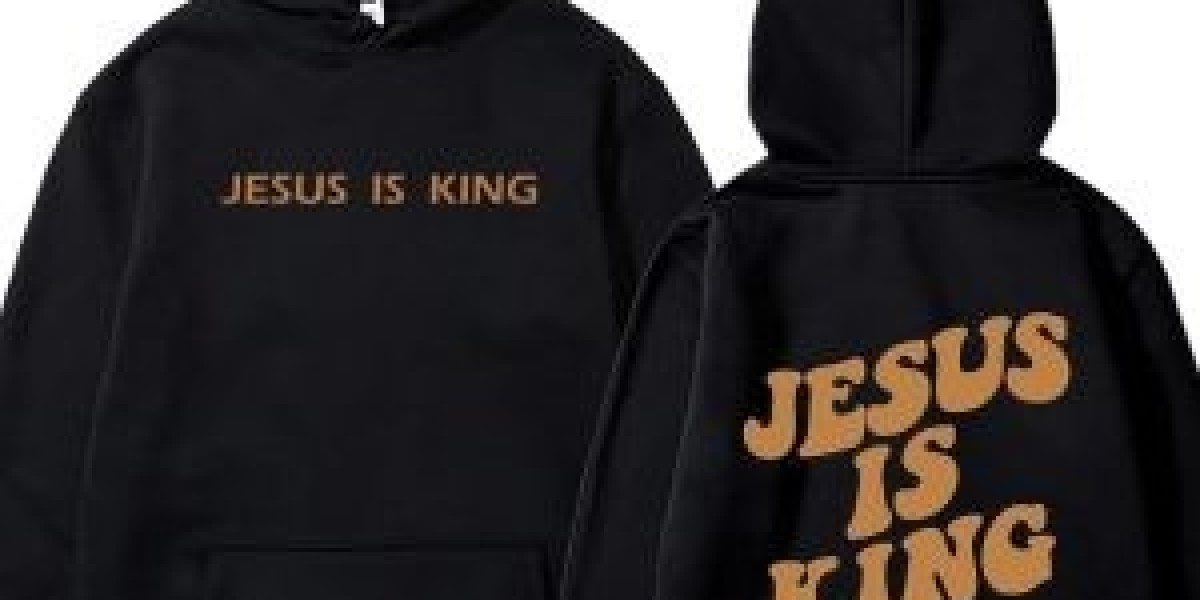Faith, Fashion, and Fleece: The Legacy of the "Ye Must Be Born Again" Hoodie
In the timeline of modern pop culture, few pivots have been as sharp, polarizing, and visually distinct as Kanye West’s transition from the hedonistic "Pablo" era to the gospel-centric "Lucky Me I See Ghosts Hoodie" era. This shift, beginning in late 2018 and culminating in 2019, wasn't just sonic; it was aesthetic.
While the blue vinyl records and Sunday Service choirs set the stage, the enduring symbol of this spiritual metamorphosis became a heavy-weight, puff-print sweatshirt bearing a cryptic yet evangelical command: "Ye Must Be Born Again."
This item, born from a collaboration between West and the enigmatic streetwear label Cactus Plant Flea Market (CPFM), transcended typical concert merchandise to become a holy grail of streetwear history. It represents a moment where hypebeast culture crashed headfirst into theological doctrine.
The Theology of "Ye": Decoding the Double Entendre
To understand the impact of the sweatshirt, one must first unpack the brilliance of its syntax. The phrase is a direct reference to the New Testament scripture, specifically John 3:7, where Jesus speaks to Nicodemus:
"Marvel not that I said unto thee, Ye must be born again."
In the King James Version of the Bible, "Ye" is an archaic plural form of "you." However, in the context of Kanye West’s career, "Ye" carries a heavy double meaning. In 2018, West formally changed his name to "Ye," citing it as the most commonly used word in the Bible (meaning "you") and stripping away his ego (Kanye means "the only one").
Therefore, the text on the hoodie serves two distinct narrative functions:
The Biblical Command: It is a literal evangelistic tool, telling the observer that they must undergo a spiritual rebirth to enter the Kingdom of Heaven.
The Personal Confession: It serves as a self-referential statement that Ye (Kanye West) himself had to be "born again." It acknowledges his past controversies, mental health struggles, and public outbursts, framing his conversion to Christianity not just as a choice, but as a necessity for his survival.
This double entendre turned a piece of cotton fleece into a complex biographical statement. Wearing the hoodie wasn't just co-signing a religion; it was co-signing Kanye’s redemption arc.
Aesthetic Resurrection: The Design Language
The "Ye Must Be Born Again" hoodie was not designed by Kanye West alone. It was the product of Cactus Plant Flea Market, a brand helmed by the reclusive Cynthia Lu. Lu, a former assistant to Pharrell Williams, is known for a playful, DIY aesthetic that utilizes heavy textures and "off" typography.
The "Puff" Print
The defining feature of the garment is the lettering. Unlike standard screen-printing which lies flat, the text utilizes a high-density foam ink, often called "puff print." The letters rise significantly off the fabric, creating a tactile, three-dimensional effect. This gave the hoodie a sense of weight and premium quality that standard band merchandise lacks.
The Silhouette and Palette
The fit of the sweatshirt aligned perfectly with the "Yeezy" silhouette that West had popularized over the previous five years: cropped at the waist, dropped shoulders, wide sleeves, and a heavy, boxy drape. It was anti-fit—designed to envelope the wearer in comfort, mirroring the protective nature of the faith it proclaimed.
The colorways were decidedly earthy and muted, reflecting the "Sunday Service" aesthetic which favored soil and stone tones over the neon of traditional streetwear. The primary iterations included:
Core (Dark Grey/Black)
Coal (Washed Black)
1972 (Cream/Off-White)
Cultural Impact: When the Church Met the Hypebeast
The release of Jesus Is King and the accompanying merchandise created a fascinating sociological phenomenon. Suddenly, secular "hypebeasts"—fashion enthusiasts driven by exclusivity and resale value—were wearing overtly Christian dogma.
The Celebrity Co-Sign
The hoodie’s status was cemented not just by Kanye, but by who else wore it. Most notably, Drake was spotted wearing the hoodie in September 2019. Given the tumultuous on-and-off feud between Drake and Kanye, this was interpreted by fans as a peace offering or a sign of mutual respect, further inflating the hype around the garment. Other tastemakers, from Pharrell Williams to Jerry Lorenzo (Fear of God), championed the aesthetic, bridging the gap between the distinct worlds of luxury fashion and streetwear.
The Resale Market
Upon its initial release on the CPFM website and later via Kanye’s merch drops, the hoodie retailed for roughly $240 USD. While expensive for a sweatshirt, it was accessible compared to high-fashion alternatives. However, due to limited stock and high demand, the secondary market exploded.
On platforms like StockX and Grailed, the hoodie began trading for upwards of $400 to $800, reaching peak valuations in 2020. It became a status symbol that signaled the wearer was "in the know"—aware of the CPFM connection, the Kanye era, and the specific cultural moment.
The Controversy: Commodification of Faith?
No Kanye West project is complete without controversy. As the "Jesus Is King" merchandise flooded the streets, a debate arose regarding the ethics of monetizing religious fervor.
Critics argued that selling $240 hoodies with Bible verses was the antithesis of Christian humility—essentially commodifying the Gospel for profit. Was this genuine evangelism, or was it capitalism disguised as a crusade?
West’s defense, supported by designer Jerry Lorenzo, was that the church had lost its hold on "cool." By injecting high-level design and desirability into religious clothing, they argued they were making faith relevant to a younger generation that worshiped at the altar of Supreme and Off-White. They viewed the hoodie not as merchandise, but as a contemporary tract—a way to get the message of John 3:7 into spaces where a Bible would never reach, such as nightclubs, fashion weeks, and rap concerts.
Conclusion: A Time Capsule of Transformation
Years removed from the Jesus Is King era, the "Ye Must Be Born Again" sweatshirt remains one of the most significant artifacts of Kanye West’s career. It marks the dividing line between the "Old Kanye" and the "New Ye."
It stands as a testament to the power of typography and context. By taking an ancient scripture and filtering it through the lens of modern streetwear design, Kanye West and Cactus Plant Flea Market created a garment that was simultaneously a fashion statement, a tabloid headline, and a prayer.
Whether viewed as a cynical cash-grab or a genuine expression of spiritual renewal, the hoodie achieved its goal: it forced the world to read the writing on the chest, and for a brief moment, talk about what it means to be born again.
Would you like me to...
Find current resale prices and authenticators for this specific hoodie?
Analyze the design history of other Cactus Plant Flea Market collaborations?
Explain the tracklist and musical themes of the Jesus Is King album in detail?



